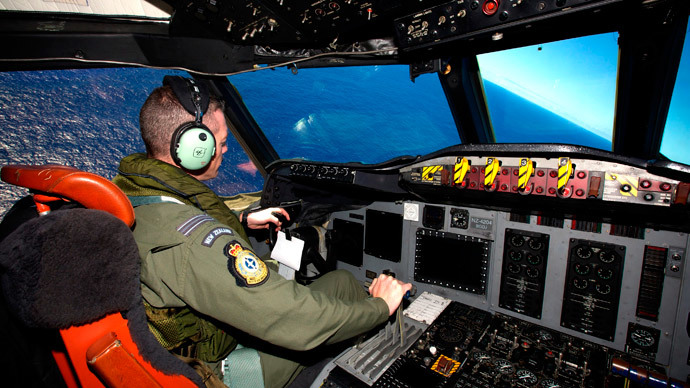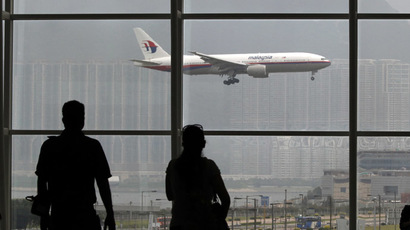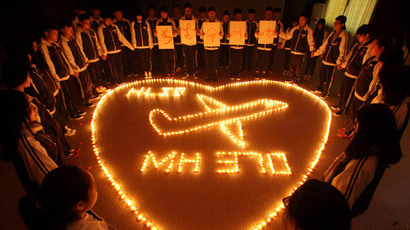US Navy official: We looked for MH370 in the wrong area

The four pings at the center of the search for the missing Malaysia Airlines Flight 370 were not from the jet’s black boxes, a senior US Navy official said on Wednesday. The sounds were likely from another man-made source unrelated to the missing plane.
Michael Dean, the Navy's deputy director of ocean engineering, told CNN that most of the countries involved in the hunt for MH370 now agree the four acoustic pings did not come from the missing plane’s onboard data or cockpit voice recorders. If they had, he said, searchers would have found the equipment known as the black boxes.
"Our best theory at this point is that (the pings were) likely some sound produced by the ship ... or within the electronics of the Towed Pinger Locator," Dean said to CNN. "Always your fear any time you put electronic equipment in the water is that if any water gets in and grounds or shorts something out, that you could start producing sound.”
The Boeing 777-200 aircraft went missing on March 8 during a flight from Kuala Lumpur, Malaysia to Beijing, China. The plane carrying 239 people disappeared from radars over Vietnamese airspace, seemingly vanishing into thin air. The Australian naval vessel Ocean Shield, using a Towed Pinger Locator, reported detecting four separate sets of ping signals in the southern Indian Ocean in early April, leading to an international coalition to focus the search for MH370 on a 329-square-mile area about 1,000 miles off the coast of Australia.
Dean told CNN it was not possible to absolutely exclude that the pings came from the aircraft’s black boxes, but that there was no evidence suggesting that they did.
But later on Wednesday, a US Navy spokesman dismissed Dean’s comments as "speculative and premature."
"Mike Dean's comments today were speculative and premature, as we continue to work with our partners to more thoroughly understand the data acquired by the Towed Pinger Locator," US Navy spokesman Chris Johnson said in a statement.
Despite the conflicting statements from the Navy, the Joint Action Coordination Centre - the international coalition in charge of the search - announced it had called off the hunt for debris in the remote area of the Indian Ocean it had focused on for the last seven weeks.
"The Australian Transport Safety Bureau has advised that the search in the vicinity of the acoustic detections can now be considered complete and in its professional judgment, the area can now be discounted as the final resting place of MH370," JACC said in an emailed statement.
Along with Ocean Shield, the Bluefin-21 submersible drone hired by the US Navy had successfully mapped 97 percent of the area near where the four pings were heard, the Wall Street Journal reported. The unmanned sub suffered operational problems as it strained to search depths over 3.1 miles from the surface (as its operating limit is three miles) in an area roughly 10 times the size of Manhattan.
The JACC said it would expand its search to a 21,600 square miles based on a satellite analysis of the planes most likely route. That search will likely begin in August after commercial side-scan sonar operators are contracted, and is expected to last 12 months, the Associated Press reported.














